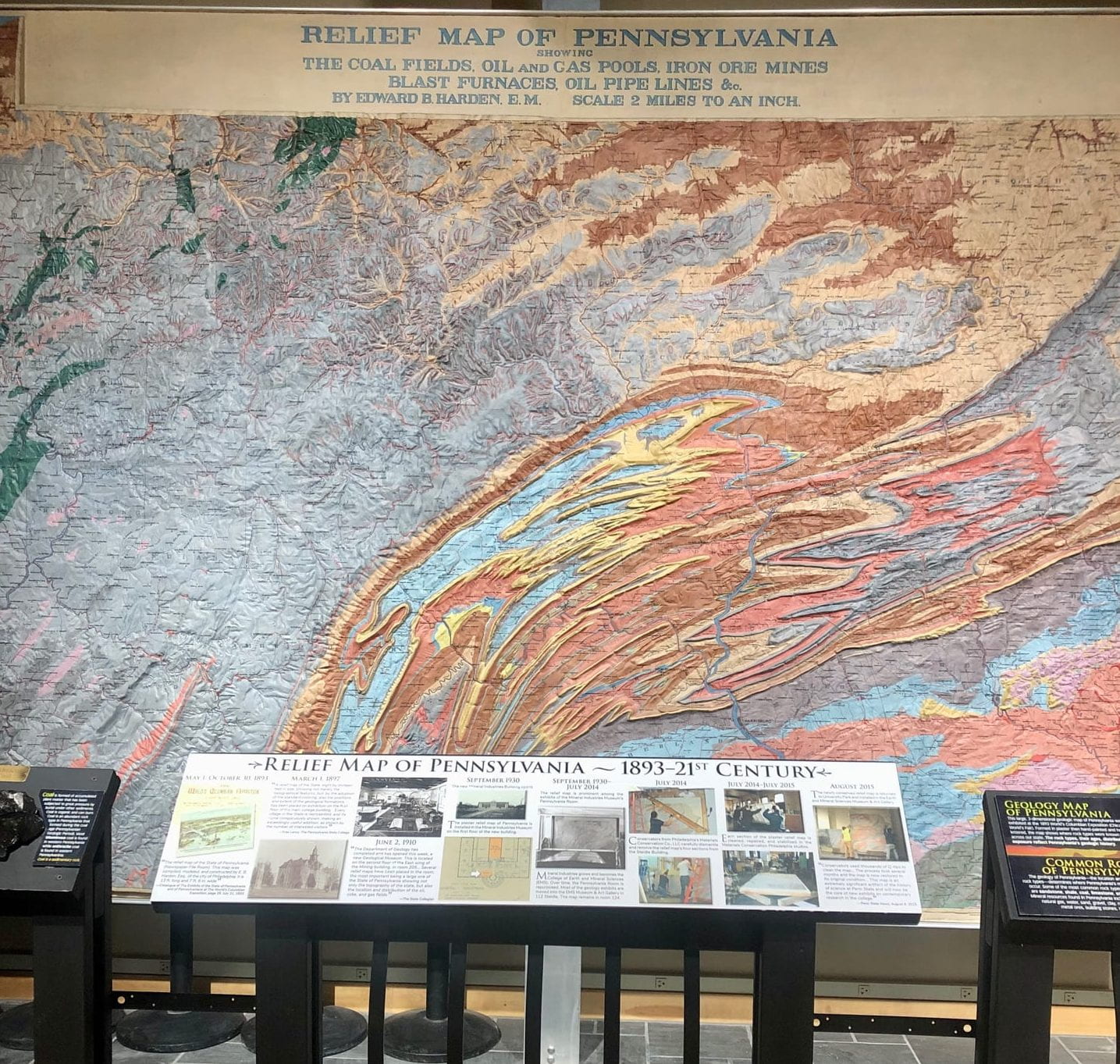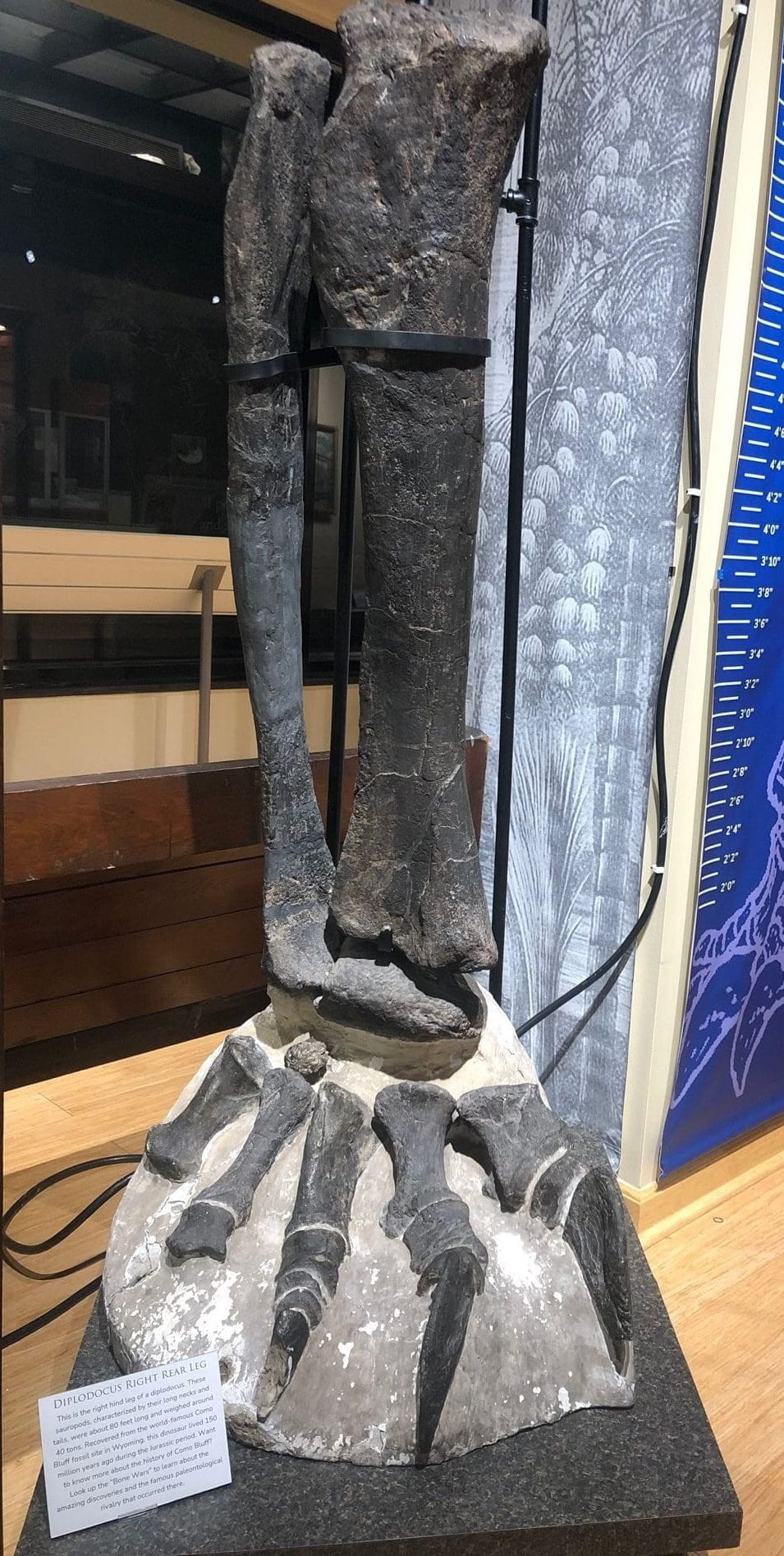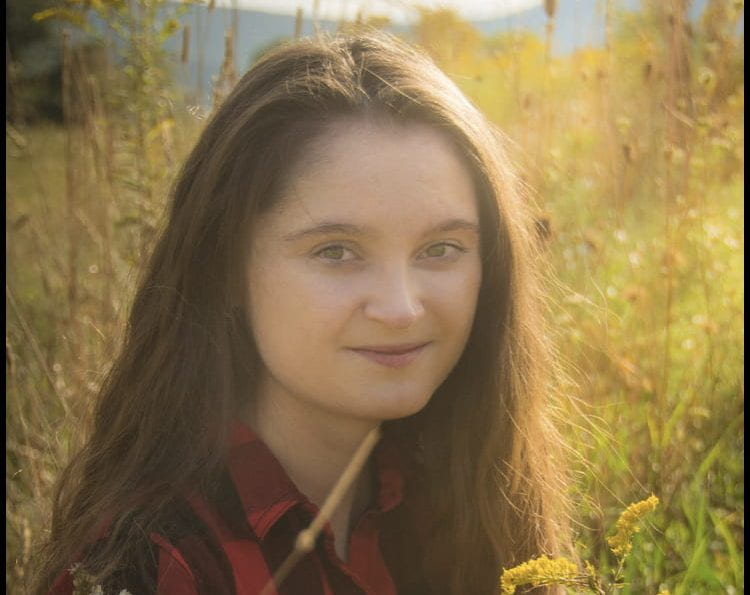By Katie Volz, Fiction Editor ∼
From the moment I first walked into the Earth and Mineral Sciences Museum and Art Gallery on Penn State’s University Park campus, I became transfixed with the exhibits. Stones that bend, dinosaur feet, and fluorescent minerals are just some of the specimens that can be found in the one-room museum in Deike Building. As a life-long natural history lover I was fascinated by all of that, but what really captured my attention was the art.
The fall 2022 art show was Women’s Work, an exhibit entirely comprised of paintings done by women. Historically, the Earth and Mineral Sciences have been off limits to women, which makes these pieces even more spectacular; the women behind them were painting a forbidden landscape for the rest of us to see.
Paintings of workers shoveling ore into industrial furnaces, mills sitting menacingly atop hillsides, and abandoned quarries that have been reclaimed by nature dotted the maze of walls within the museum. Of course, it was lovely to look at, but that is not the only reason it interested me. The combination of the paintings alongside the exhibits blurs the lines between what is science and what is art; they become one another.
As I looked around, I noticed more subtle examples of such a phenomenon. The giant topographical map of Pennsylvania was hand-drawn by people who meticulously traced every stream and road while writing the geographical names in perfect, uniform letters. The rocks and minerals on display are natural art in their own right. Each brightly colored mineral specimen, whether it has a marbled design or glitters from across the room, is a statement piece.

A plaster 3-D relief map of Pennsylvania.
Credit: Katie Volz
I began to wonder what the EMS Museum was trying to achieve, and what its mission was.
I had the privilege to speak with Patti Wood Finkle, Collections Manager, who answered my burning question, and then some more. She told me that the goal was to educate and inform, not just Penn State students, but the whole State College and Centre County community, including K-12 learners. The museum uses preservation techniques to teach about earth and mineral sciences, but also art and the history surrounding the field and exhibits.
In our brief interview, I asked her a few other questions that I was curious about. I wondered what inspired her to take the job as Collections Manager. She replied that she had previous experience working with the types of objects found in the EMS Museum, but what really piqued her interest were the tools. Within the museum, there are “over 2500 scientific instruments, tools, and apparatus,” according to Wood Finkle, and they are made of various materials, including glass, wood, rubber, and metal.
After that, I asked two more questions. First, I got right into what I had wanted to know since my first field trip there last semester: Why does the museum include both art and fossils, let alone right next to each other? She responded like this:

A fossilized Diplodocus leg. Credit: Katie Volz
“The Steidle Collection of American Industrial Art depicts mineral industrial practices at a specific point in time. Each one is a snapshot and stands at the intersection of art and science. Unlike other art collections, this one is very literal, showing the viewer factories, mines, quarries, and mills as they appeared. They show the industries that are populated by the EMS majors as well as the processes involved in these industries. While some were cutting-edge at the time of their creation, now they show us how things were done in the past, reminding us how far we have come as a society. Additionally, many of the paintings demonstrate the recovery of other important objects in our collection such as coal and critical minerals.”
“The Steidle Collection of American Industrial Art depicts mineral industrial practices at a specific point in time. Each one is a snapshot and stands at the intersection of art and science. Unlike other art collections, this one is very literal, showing the viewer factories, mines, quarries, and mills as they appeared.”
My last question explored what makes the Earth and Mineral Sciences Museum and Art Gallery different from the other museums around the University Park campus. Her answer is perhaps one of my favorites from the interview. She said, “I would prefer to talk about how the museums are similar and highlight the opportunities that we all have to work together creating a cohesive experience for the Penn State students and the wider community. Each museum may appear to have a different focus, but our missions are to educate and offer support to our campus community and the EMS Museum is no different.”

A painting for the new art show “Over and Under: Bridges of Pennsylvania.” “Latrobe Landscape,” by Mary Martha Himler (oil on canvas, 1937). Credit: EMS Museum
While gems, footprints, oil paint, and iron are all intriguing elements of the museum, I would also like to draw attention to the upcoming art show: “Over and Under: Bridges of Pennsylvania.” All of the paintings will feature bridges from across the commonwealth through the eyes of artists. This will be another example of sciences and art being mixed, as bridges are both spectacles of engineering and art.
The museum’s entire art collection can be viewed online here: Steidle Collection of American Industrial Art.
The EMS Museum can be visited Monday, Wednesday, and Friday from 10:00 a.m. to 5:00 p.m. and Tuesdays and Thursdays from 10:30 a.m. to 4:00 p.m. Their website also provides information on holiday hours, events, and locations.
 Katie Volz is a second-year student at Penn State and is minoring in English, while combining Archaeology and Medieval Studies to create her own major. She is the Fiction Editor for this semester’s KLIO staff. She is also part of Kalliope and Vaccinate America. Katie enjoys writing Historical Fiction, Sci-fi, and Mystery. She can usually be found with a steaming cup of Earl Grey (hot) planning her next short story or crafting an essay full of antics from past vacations.
Katie Volz is a second-year student at Penn State and is minoring in English, while combining Archaeology and Medieval Studies to create her own major. She is the Fiction Editor for this semester’s KLIO staff. She is also part of Kalliope and Vaccinate America. Katie enjoys writing Historical Fiction, Sci-fi, and Mystery. She can usually be found with a steaming cup of Earl Grey (hot) planning her next short story or crafting an essay full of antics from past vacations.